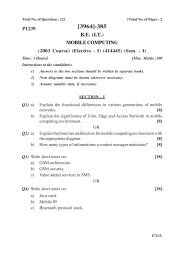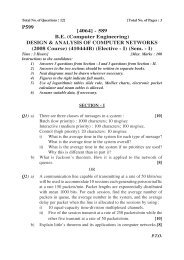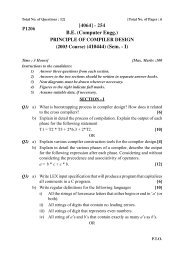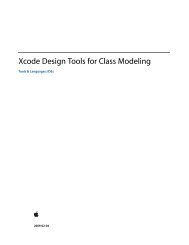Cloud Computing and SOA Convergence in Your Enterprise: A Step ...
Cloud Computing and SOA Convergence in Your Enterprise: A Step ...
Cloud Computing and SOA Convergence in Your Enterprise: A Step ...
Create successful ePaper yourself
Turn your PDF publications into a flip-book with our unique Google optimized e-Paper software.
4 Chapter 1 Where We Are, How We Got Here, <strong>and</strong> How to Fix It<br />
<strong>SOA</strong> to the Rescue<br />
While there are many attempts to fix the badly broken IT architectures<br />
with<strong>in</strong> our enterprises, most “solutions” just put another technology layer on<br />
top of the exist<strong>in</strong>g technologies <strong>in</strong> hopes that the technology will somehow<br />
fix the issues. As you may have guessed, it just makes th<strong>in</strong>gs more complex.<br />
Few enterprises were will<strong>in</strong>g to take the risk <strong>and</strong> address the core issues.<br />
Service-oriented architecture, or <strong>SOA</strong>, is really about fix<strong>in</strong>g exist<strong>in</strong>g architectures<br />
by address<strong>in</strong>g most of the major systems as services <strong>and</strong> abstract<strong>in</strong>g<br />
those services <strong>in</strong>to a s<strong>in</strong>gle doma<strong>in</strong> where they are formed <strong>in</strong>to<br />
solutions. Simple <strong>in</strong> concept—<strong>and</strong> really noth<strong>in</strong>g new—<strong>SOA</strong> is our best approach<br />
to fix<strong>in</strong>g the broken architectures. With the wide use of st<strong>and</strong>ards<br />
such as Web Services, <strong>SOA</strong> is be<strong>in</strong>g promoted as the best way to br<strong>in</strong>g architectural<br />
agility to your enterprise—that is, if you do <strong>SOA</strong> correctly. There is<br />
no magic bullet here.<br />
<strong>SOA</strong> is a valid approach to solve many of the architectural problems<br />
that enterprises face today. However, those who implement <strong>SOA</strong> typically<br />
look at <strong>SOA</strong> as someth<strong>in</strong>g you buy, not someth<strong>in</strong>g you do. Thus, many <strong>SOA</strong><br />
projects are aga<strong>in</strong> about purchas<strong>in</strong>g some technology that is sold as “<strong>SOA</strong><strong>in</strong>-a-box,”<br />
which turns out to be <strong>in</strong>-a-box but not <strong>SOA</strong>, <strong>and</strong> thus only adds<br />
to the problems.<br />
<strong>SOA</strong>, as the A implies, is architecture. And thus it is the orderly arrangement<br />
of systems that best serve the service needs of the bus<strong>in</strong>ess. Taken <strong>in</strong> its<br />
literal context, enterprise IT can succeed with <strong>SOA</strong>. However, most often it<br />
does not succeed, <strong>and</strong> much of that failure occurs because <strong>SOA</strong> implementers<br />
view <strong>SOA</strong> as someth<strong>in</strong>g other than architecture, <strong>and</strong> most often those implementers<br />
are not architects.<br />
<strong>SOA</strong> is a valid architectural pattern <strong>and</strong> one that is leveraged throughout<br />
this book, but you need to look at <strong>SOA</strong> as a journey, not a project, <strong>and</strong> clearly<br />
not a product. At the same time, you need to break <strong>SOA</strong> down <strong>in</strong>to small, <strong>in</strong>cremental<br />
successes that also move the enterprise toward the core value proposition<br />
of <strong>SOA</strong>, which becomes even more powerful when leveraged with<br />
emerg<strong>in</strong>g concepts such as cloud comput<strong>in</strong>g, the other focus of this book.<br />
We can call this “small <strong>SOA</strong>” <strong>and</strong> “big <strong>SOA</strong>.” Big <strong>SOA</strong> encompasses the<br />
larger strategic objectives of <strong>SOA</strong>: simultaneously mov<strong>in</strong>g all the enterprise<br />
IT assets to someth<strong>in</strong>g much more agile <strong>and</strong> easy to change. An example<br />
would be break<strong>in</strong>g down all relevant enterprise systems to a functional<br />
primitive, build<strong>in</strong>g them up aga<strong>in</strong> as services, <strong>and</strong> add<strong>in</strong>g a process configu-












